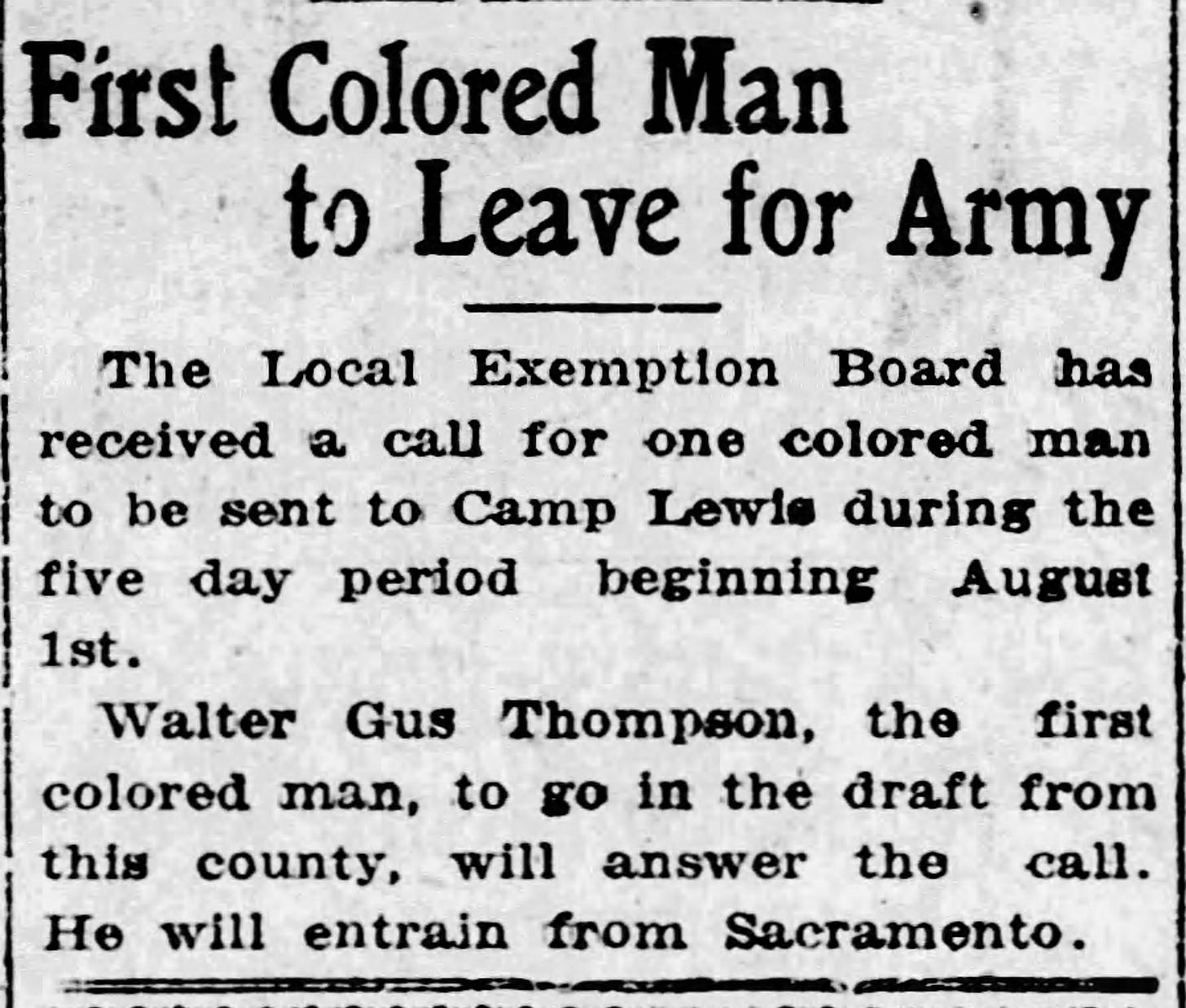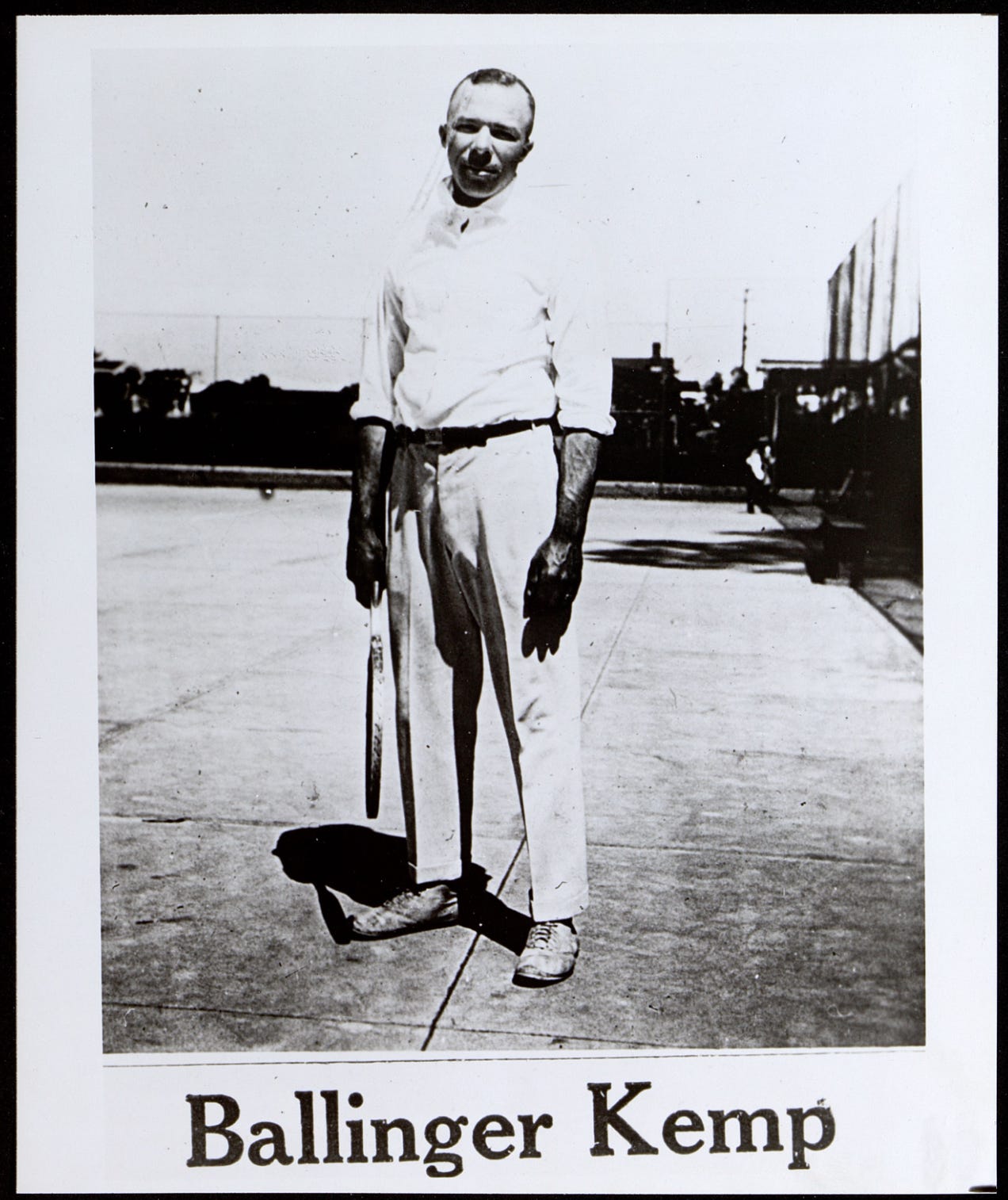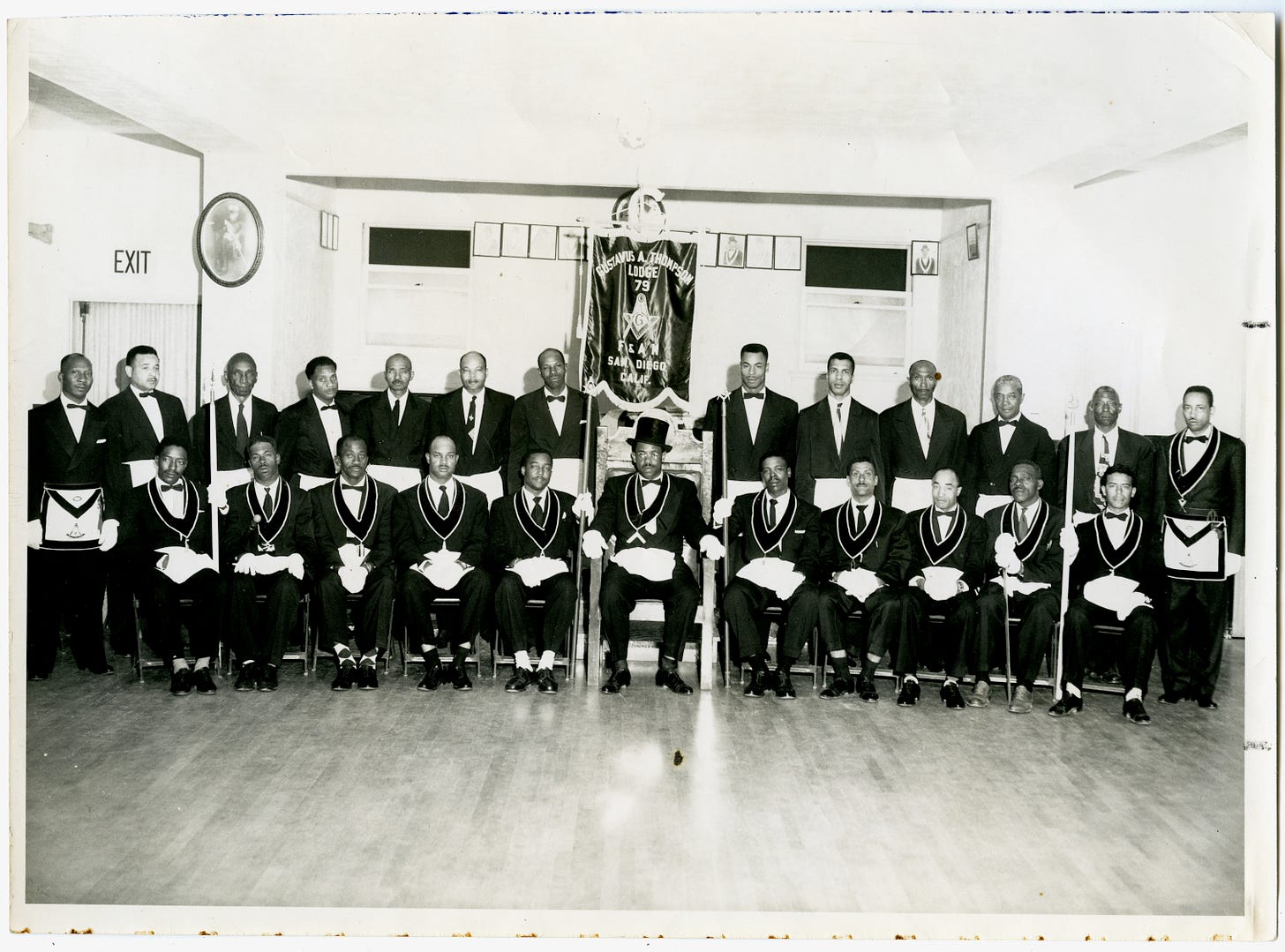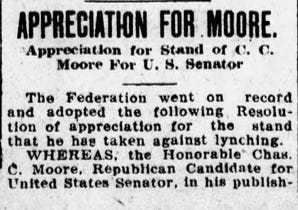Gus and Emma Thompson, Black Pioneers of Coronado and San Diego, 1886-1958
Gus and Emma Thompson's legacy of hard work, advocacy and generosity still resonates today.

Gus and Emma Thompson were among the several hundred African American pioneers who arrived in San Diego and Coronado in the mid 1880s. This successful and civic-minded couple married in 1893 and became pillars in the African American community of greater San Diego. Two of their three children were among San Diego’s first African American college graduates, while the other child was a war hero in France in WWI. Gus Thompson left a lasting impact with his work co-founding San Diego’s first Prince Hall Freemason lodge, Fidelity Lodge #10, which is still in operation today. Emma Thompson was active in religious and civic affairs of African Americans in San Diego all her life, among the most notable being her and 1922 statewide role in advocating for the passing of the Dyer Anti-Lynching Bill. The two will soon have San Diego State University’s Black Resource Center named in their honor, thanks to a generous donation by The Dong Family, who Gus and Emma first helped in 1939 (The Thompson’s later sold their Coronado home to the Dong Family in 1955).
Gus Thompson, Early Life, 1859-1886
Gus Thompson was born into slavery in Cadiz, Kentucky in 1859. Records from the U.S. Federal Census “Slave Schedules” of 1860 from Cadiz list a James E. Thompson owning 22 slaves, including thirteen children. Four of these children were listed as mulatto, which included a 1-year-old boy and three girls aged aged between 4 and 9, two of which were likely Gus’s sisters Mary and Irene.
After the end of the Civil War in April of 1865, Gus and his sisters remained enslaved for the next eight months until Kentucky eventually ratified the 13th Amendment in December of 1865. The immediate reality for the thousands of newly emancipated African Americans in Kentucky, while jubilant, was chaotic and dangerous. Author Marion B. Lucas, in his remarkably book, A History of Blacks in Kentucky, From Slavery to Segregation, 1760-1891, describes the situation for formerly enslaved Kentuckians in the immediate aftermath of the Civil War:
‘‘After Appomattox, blacks in Kentucky found themselves in a unique and bewildering situation with respect to their status. The legislature and state courts rejected federal measures that freed either black soldiers or their families, leaving about sixty-five thousand blacks in slavery until the ratification of the Thirteenth Amendment in December 1865. To the chagrin of local officials, thousands of displaced black refugees flocked into the cities and towns, seeking the protection of federal authorities. In rural areas where some were expelled from their cabins and others were unwilling to accept the authority of their owners, blacks ranged through the countryside seeking food, shelter and employment….Taken altogether, the end of slavery and the implementation of the Freedman’s Bureau resulted in a level of violence that made the years of 1866-1870 among the most lawless in (Kentucky) Commonwealth history. Much of the violence that gripped Kentucky in the years immediately following the Civil War stemmed from the prevalent belief of whites in the inferiority of blacks. The desire of the majority of white Kentuckians to keep freedmen “in their place” allowed a minority to engage in “dark and bloody deeds,” creating a “system of terrorism” in the Commonwealth...”
While very little is known about Gus’s childhood in western Kentucky between 1865-1880, but it appears much of it was spent in Henderson, Kentucky living with his two sisters, Mary and Irene, as evidenced by the US Census of 1880, which shows a “Guss Thomson” living with his sisters Irene and Mary (and her husband George Ellis). Mary married George Ellis 1875, and Mary’s younger siblings were clearly inseparable from her (Gus would repay this favor more than thirty years later, when Gus would help The Ellis Family leave Jim Crow Kentucky and join The Thompson Family in Coronado).
Henderson, Kentucky is perched on a high point on a bend in the Ohio River just across from Evansville, Indiana. After the war, Evansville was a bustling industrial city and was home to future Coronado, California founder E.S. Babcock. Babcock and his father knew all of the wealthy elite of Henderson, whose tobacco barons helped contribute to the town’s reputation as the “richest county in the world, per capita.” The high profit margins from the lucrative tobacco trade during the Antebellum period was built upon the backs of Henderson’s enslaved Black residents, who made up nearly half of the population of Henderson in 1860. During Reconstruction, the accumulated wealth of Henderson’s slave-owning tobacco barons enabled Henderson’s tobacco industry to navigate from a “Slave labor” model to a “wage labor” model without major disruptions to the industry, and made Henderson a better place than most to live in Kentucky at that time.
In the 1976 book by Maralea Arnett, The Annals and Scandals of Henderson County, the author describes in some detail the transition from slavery to freedom for Black residents in Henderson in a chapter entitled “Some Aspects of Black History:”
“The first day of January each year was the big day for the buying and renting of Negroes. Many white men, sometimes accompanied by their wives or sweethearts, gathered at the Corner of Main and First streets (Later known as Simon’s Corner) to watch and participate. A block or box, sometimes the tail end of a wagon, was placed at this corner to display the wares. Male slaves were asked to lift heavy weights, or to race each other to determine which slave had the fasted “revolving” feet.
With the coming of freedom in 1866, even the most optimistic whites were anxious about a completely new situation. Their fears were soon relieved as Starling reports in this description of how ex-slaves behaved:
“They came into this new life as though they had been drilled and tutored for months; they accepted the situation with a becoming grace, and while some few were disposed to behave unruly, the great majority behaved like men of sense and character, settling down to the realities of life…”
In Henderson, Gus found work at the nearby Soaper Farm, which belonged to one of the richest families in Henderson. The Soaper’s had amassed their tobacco fortunes using slave labor throughout the antebellum period, and had continued their tobacco farming into the 1880s. Gus endeared himself to the Soaper family through his warm personality, intelligence and hard work, and eventually became the coachman for the Soaper Family matriarch, widow Susan Soaper. Gus would have been a fixture around the Soaper mansion, and likely present when E.S. Babcock and coachman Solomon Johnson paid the Soaper family a visit looking for funds to build the Hotel Del Coronado in 1885. While Babcock failed to attract the needed funds from the Soapers, the visit likely left a an impression on Gus, who would leave Henderson for Coronado in 1886.
Emma Louise Gardner, Early Life, 1869-1885
Emma Louise Gardner was born near San Antonio, Texas in 1869. Her early life is quite a mystery. There is no clear picture of Emma’s early life in Texas or how she ended up as a young girl in Illinois working in the home of O.H.P. Forker, a former Union Army soldier (who lost an arm in the War), and who was working in an Illinois prison in 1880. Forker would migrate with his family and their young domestic servant Emma Gardner to San Diego amidst the San Diego land boom of 1885.
Life in San Diego and Coronado, 1886-1900
In the Census of 1880, San Diego County’s African American population was just 55, with 32 of those living in the mountain town of Julian. By 1890, as a result of the late 1880s land boom in San Diego, the population of African Americans in San Diego County rose to 289, with Gus Thompson and Emma Gardner being counted among these San Diego pioneers.
Upon Gus’s arrival in Coronado in 1886, Gus worked a variety of casual labor jobs, eventually landing steady work at a local livery stable. In 1887 Gus got a job that would change the trajectory of his life: he was hired as the family coachman for E.S. Babcock, the former Evansville, Indiana resident and visionary behind the founding of the town of Coronado and its historic Hotel del Coronado. In January of 1888, the Hotel del Coronado was officially opened and Gus famously escorted the first guests to the front steps of the hotel aboard the Babcock Coach.

Lucille Soaper Stites, a Coronado resident and granddaughter of Susan Soaper, Gus’s former employer in Kentucky, wrote a short article in the Coronado weekly paper in 1963 describing the early period of Coronado’s founding and mentions Gus Thompson:
“Babcock brought out many Negroes from Henderson to help build the hotel, many of whom later settled in the this area. One of these was Gus Thompson, who was my grandmother’s Coachman (in Henderson). He became Mrs. Babcock’s coachman and brought the first guest to the hotel in Mrs. Babcock’s carriage… Mr. Spaulding, rector of Christ Episcopal Church, told me: “Gus is the most courtly gentleman in Coronado.” Gus soon had a livery stable on the 800 block of C Avenue, which was still there when I came…”
- Lucille Soaper Stites, Coronado resident and granddaughter of Susan Soaper, writing in the Coronado Eagle and Journal, October 1963.
Gus and Emma are married - 1893
In September of 1893, Gustavus “Gus” Thompson married Emma Louise Gardner in a ceremony held at a church in downtown San Diego. Once married, Emma moved from San Diego to Coronado and began work as a live-in “child’s nurse” in the home of Giles Kellogg, who was the Auditor of the powerful Coronado Beach Company (which owned the Hotel Del Coronado and most of the land of Coronado). Gus continued working as coachman for Babcock while living in the horse stables of the Hotel Del Coronado.
Emma gave birth to their first child, Walter, in 1894. The following year, in 1895, Gus Thompson acquired a lot from the Coronado Beach Company where he planned to put up a new cottage for his family. A snippet from the San Diego Tribune, mentions the same, in a section called “Coronado Notes”
Pioneers in the mountains of Pine Valley - 1895-1898
Gus’s plan to build a cottage for his family was very likely delayed when he was suddenly tasked by E.S. Babcock to move with Emma and young Walter into the San Diego County mountain community of Pine Valley in the summer of 1895. For the next several summers Gus and Emma, ran a roadside restaurant/canteen in Pine Valley for the workers on Babcock’s Pine Valley water project and for travelers between San Diego and the Imperial Valley. During this period, and the reputation of Gus and Emma grew, as did their family (Edythe was born in 1896). In September of 1898, Gus was elected as one of ten Coronado representatives to the Republican Party’s San Diego County convention, joining the likes of City Attorney Hizar and City Founder E.S. Babcock:
Mrs. G.A. Thompson (Emma) was recognized in 1899 by the San Diego Sun newspaper as having been one of the organizers of a “soiree” by The Violet Club, which represents “the highest strata of San Diego’s colored society.”
In late 1899, Gus and Emma purchased two bigger lots in Coronado in 1899, which would soon become the site of their future family home and livery Stable at 830 and 832 C Ave (It was these two lots that were later sold The Dong Family in 1955 and which the Dong Family is now selling in order to fully fund their pledge to San Diego State University’s Black Resource Center that will be renamed in honor of Gus and Emma Thompson).
The Thompson Family Making their Mark - 1900-1920s
This twenty year period was a period of tremendous success for the entire Thompson Family. Gus and Emma each had their own businesses - Emma ran a Cafe at Tent City for a number of years, while Gus had a booming transfer and livery stable business. The Thompson children all made their mark during this period as well. A remarkable collection of photos of the Thompson Family were recently found in the Miriam Matthews Collection at UCLA Library recently, and are showcased below.
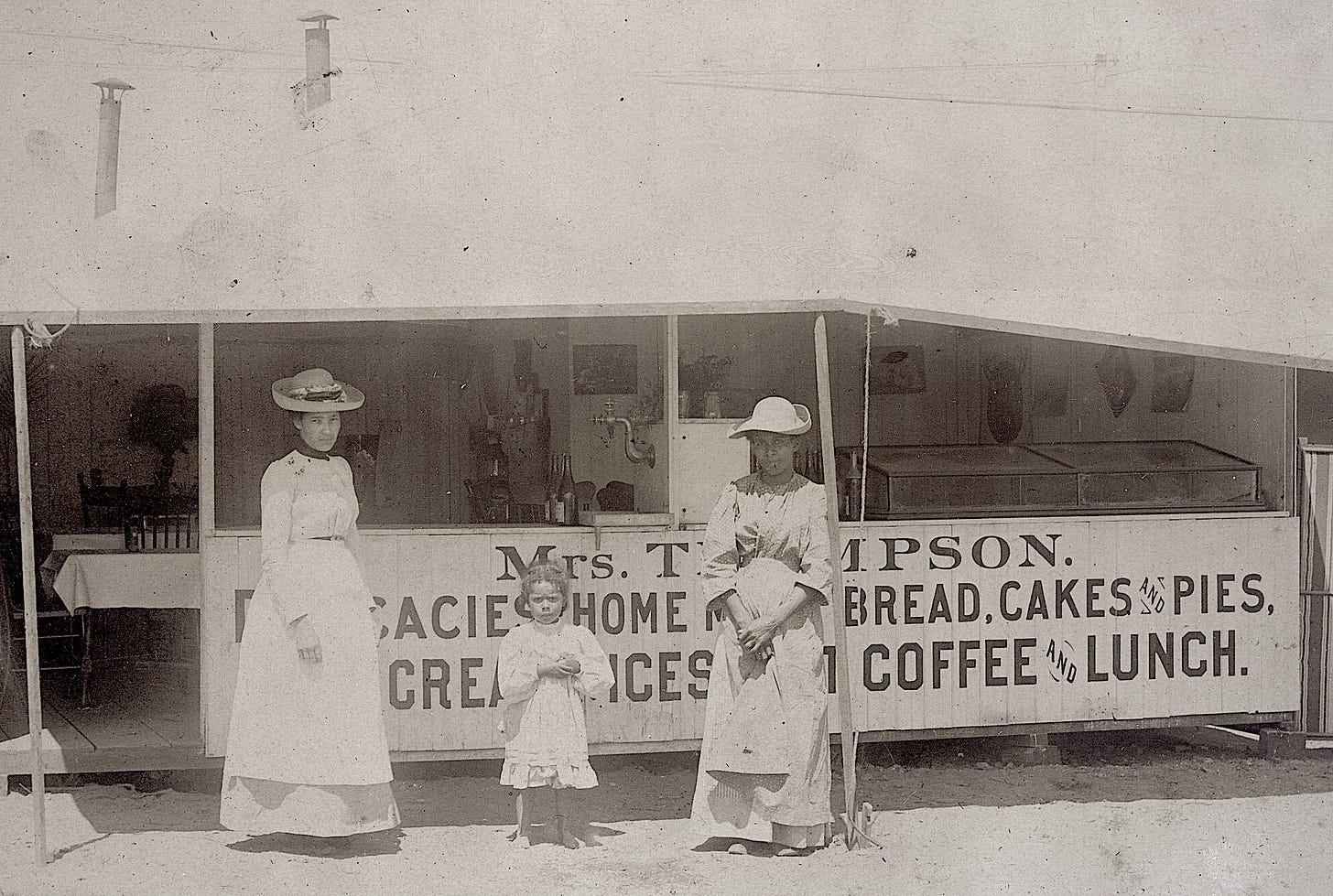
Below is a photo of two workers of Gus Thompson Livery Stables, in front of Gus’s Livery Stable, also from around 1902 (note the house in the background to the right - which is still standing today at 832 C Ave):

Gus and Emma’s two eldest children, Walter and Edythe, attended Coronado School up until 8th grade (there was no High School in Coronado until 1916). Son
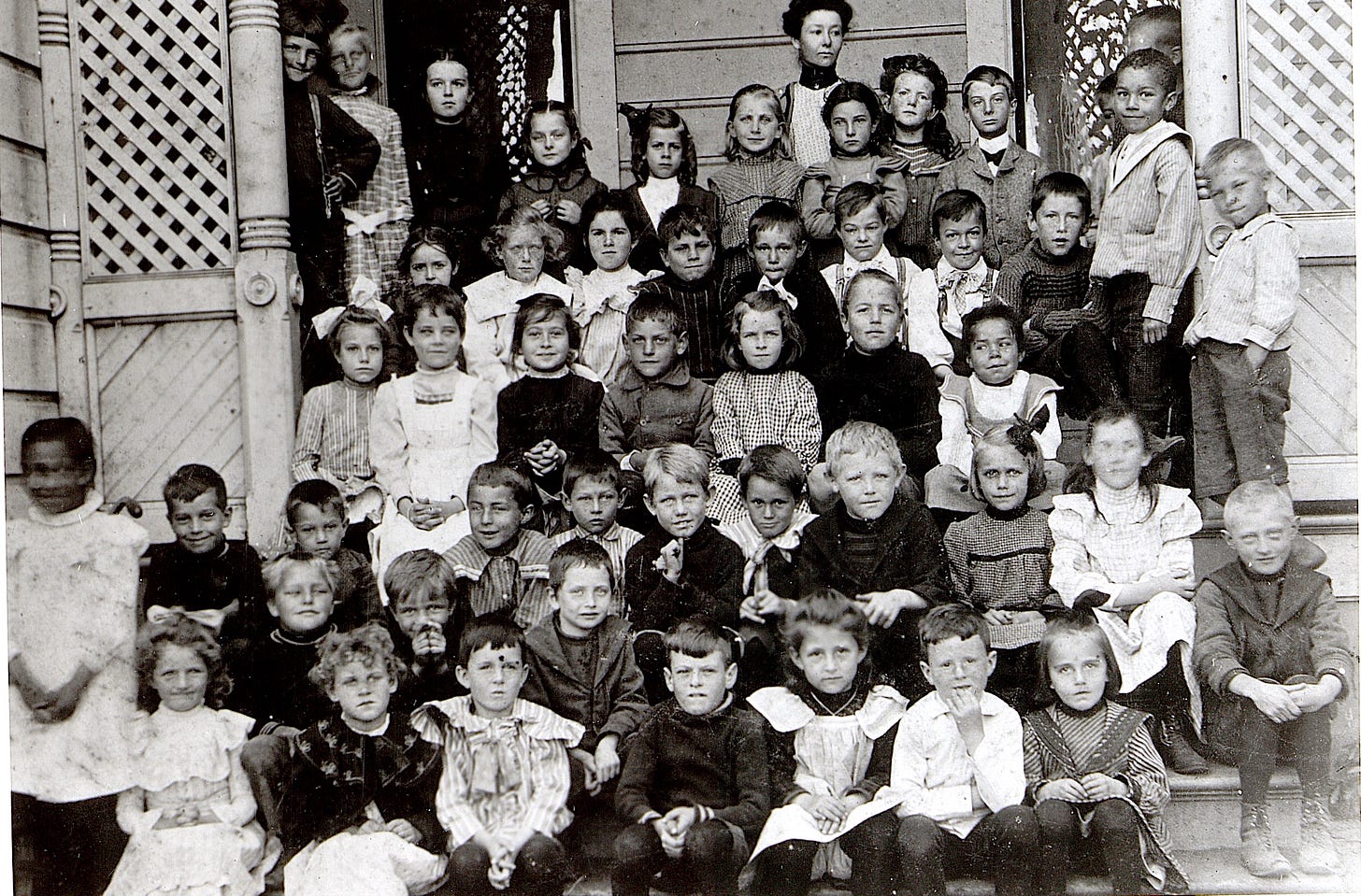
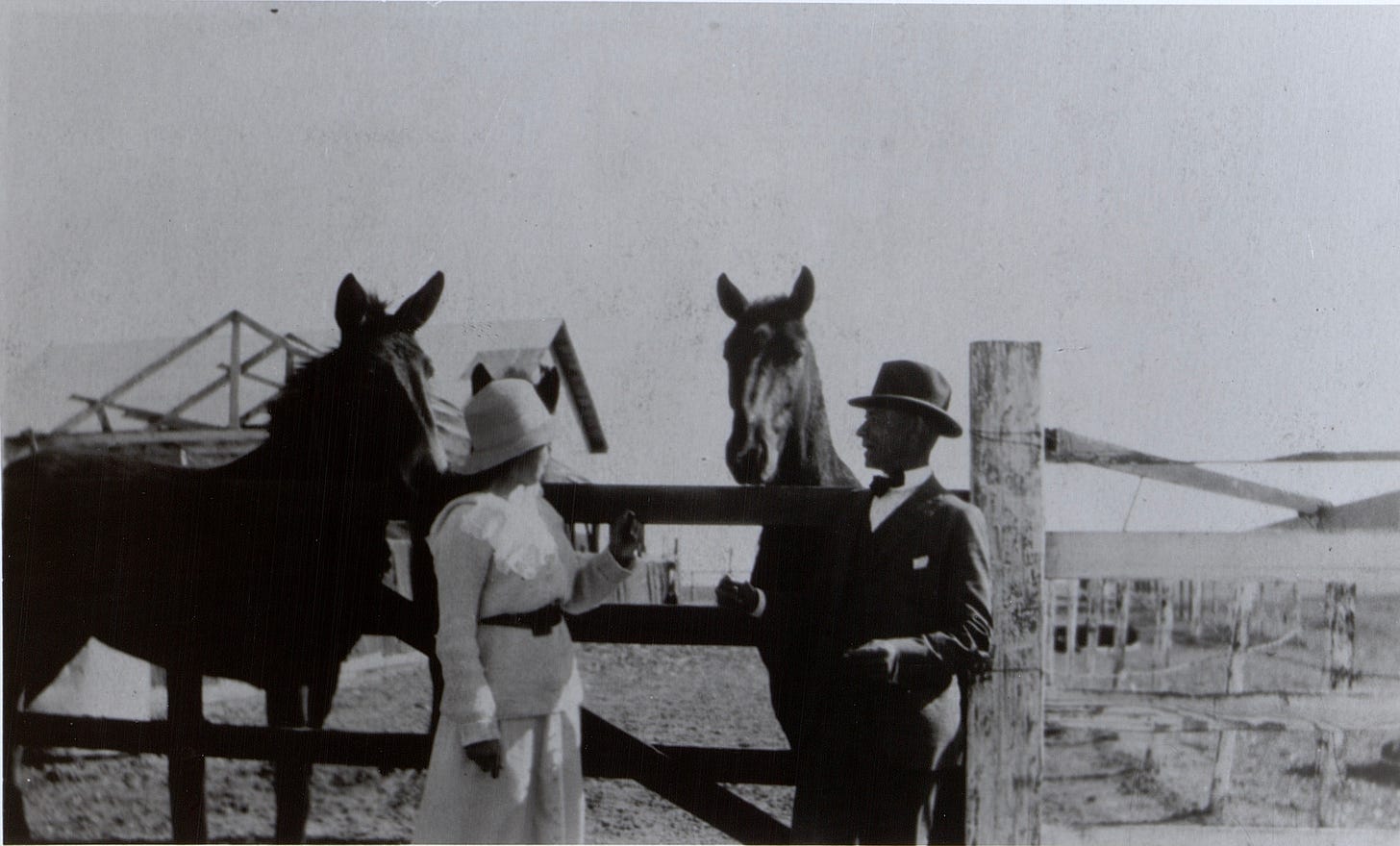
The Ellis Family arrives from Henderson in 1910
A wonderful moment within this golden era for the Thompson family was the arrival of Gus’s relatives from Kentucky. Gus’s sister Mary and husband George Ellis (and kids) arrived from Henderson, Kentucky to San Diego in 1910. Gus obviously never forgot how Mary and George had helped him when he was a young man in Henderson, and was now returning the favor in helping facilitate their move. In 1912, the Ellis’s moved to Coronado into a small house at 535 F Avenue, and the youngest Ellis child, Leo, enrolled in Coronado School as a classmate of Edward Thompson. The two boys were inseparable, and were part of the great Coronado High School Football teams of 1917-1920.
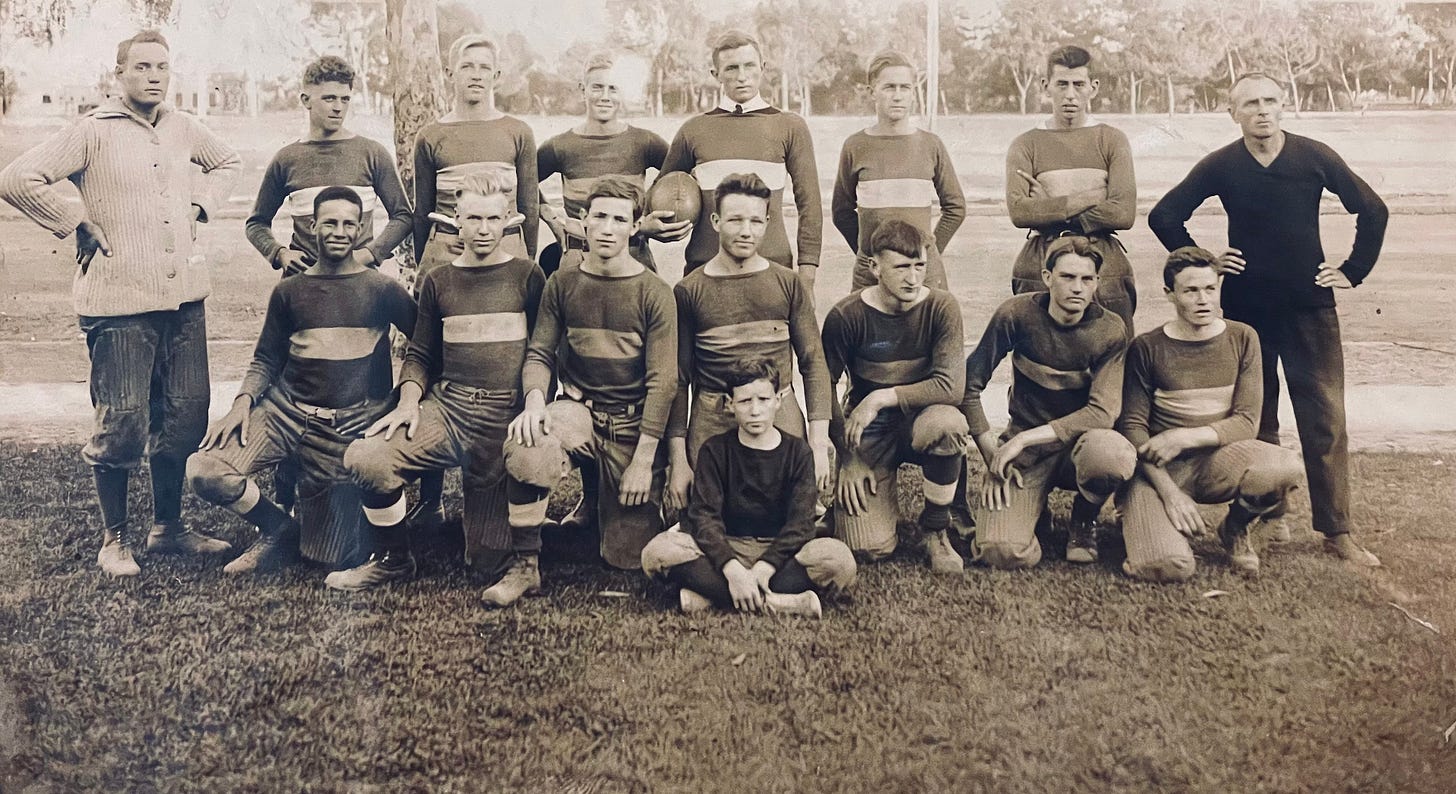
Emma Thompson - Super-Mom
Emma Thompson is listed in numerous posts in the California Eagle, Southern California’s largest African American Newspaper, as organizing a variety of events for youth, church members and numerous social clubs in Coronado and San Diego between 1912 and the the 1940s.
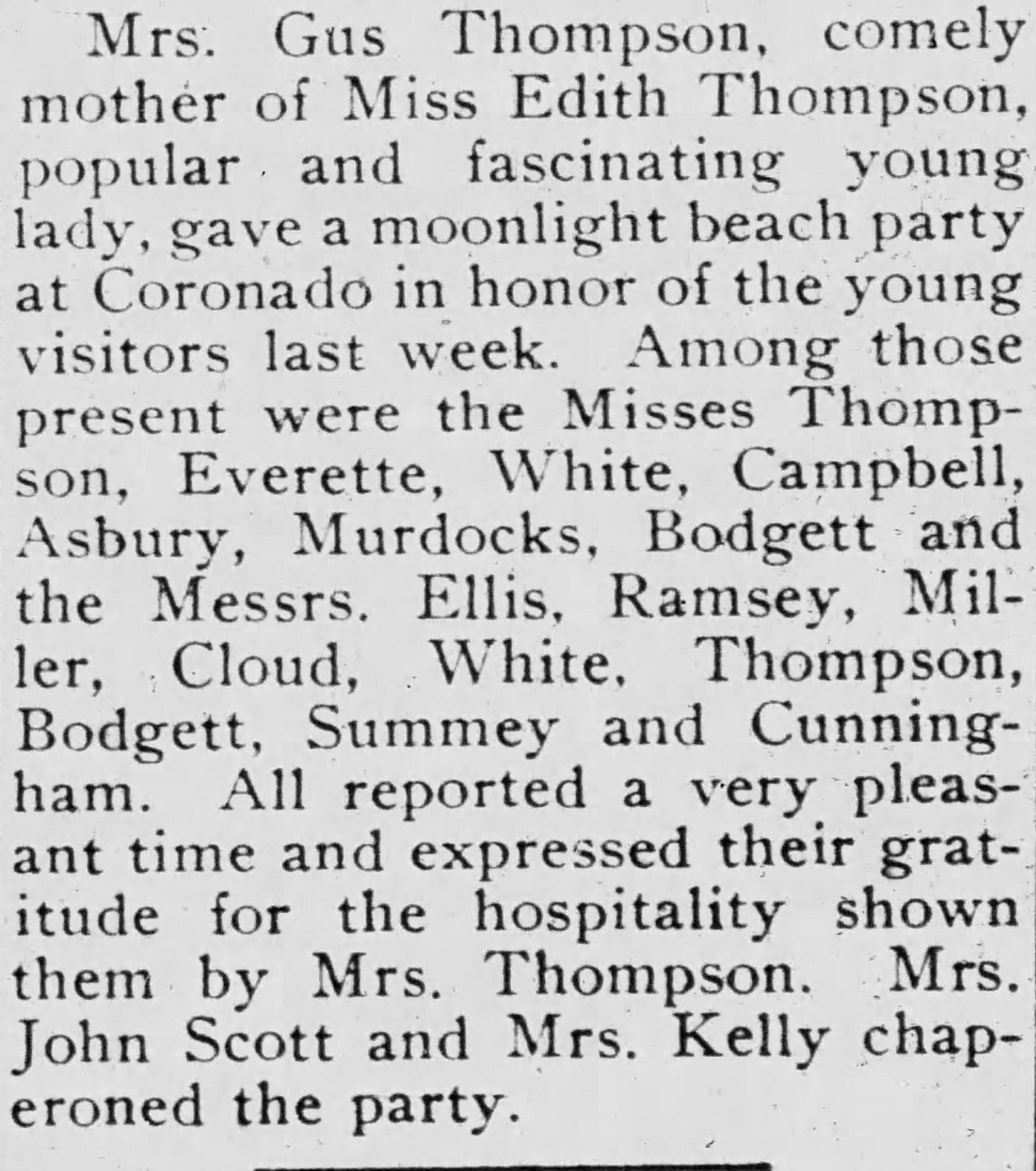
Walter Thompson
In 1914, eldest son Walter moved to Truckee, California to pursue a career as a Ranger in the Sierra Nevada Mountains. This was a truly unique career choice for a young African American city kid to choose - he may have been inspired by the stories of the Buffalo Soldiers protecting the Yosemite and Sequoia National Parks, or perhaps it was fond memories of his time in the mountains of Pine Valley as a toddler. Sadly, his dream of being a ranger was cut short in in 1918, when he was drafted into WWI. The local newspaper in the area printed a story about his calling up to the Army, seen below.
Walter enlisted as a member of the 815th Pioneer Regiment, and arrived in France at the end of the war. His unit spent the majority of their six months in France on the horrible battlefield of the Meuse-Argonne, where he and his fellow troops helped to build the Meuse-Argonne Cemetery, while also doing the solemn work of digging, retrieving and identifying the bodies of thousands of American dead before reburying them at the newly built US cemetery, the largest in Europe. Walter returned to Coronado from his time in France before moving to San Jose with his wife Maud, in 1920.
Edythe Thompson Kemp
Edythe’s life in this period was also quite extraordinary. Due to the fact that Coronado had no High School between 1910-1915, Edythe attended both High School and part of college at Western University in Kansas, one of the earliest Historically Black Colleges or Universities west of the Mississippi. She completed her studies in 1918 at Wilberforce University in Ohio, another historically important HBCU. She returned to Coronado in 1918 as one of the first African American college graduates from San Diego County. In 1920, she would marry Ballenger Kemp of Los Angeles in Bethel AME Church in San Diego 1920, at a wedding attended by 250 guests.
Edythe Thompson Kemp would had a storied life as member of the African American elite of Los Angeles for nearly 30 years. She was a close family friend and Godmother to one of the children of famed Black architect Paul R. Williams. In the 1930s she worked in Hollywood as a personal assistant to both Bette Davis and later Evelyn Keyes, one of the stars of Gone With the Wind. After the tragic early passing of her husband in 1945, and her father a few years later, she spent much of her later years in San Diego caring for her mother (who passed in 1958), and as a doting grandmother to her grand-children Ballinger and Lauren.
Edward “Puss” Thompson, Football legend
The youngest son of Gus and Emma Thompson, Edward Thomspon, was born in Coronado in 1901 and was the second African American graduate in Coronado High School history (he followed his cousin Leo Ellis by one year, who was the first graduate of Coronado High School). Edward was a tremendously talented football player, and was a star on the 1917-1919 championship teams of Coronado. He joined a number of his Coronado High School teammates at Whittier College and was a star running back between 1920-1924. He is the first true African American collegiate football star from Southern California, and was featured in numerous stories in the Los Angeles press, including a front page story and photo in the Los Angeles Times in 1922:
History of The Thompson Home, 830-832 C Ave, 1901-1955
Gus and Emma Thompson purchased the lots in 1899, and built the family home (832 C Ave) and livery stable (830 C Ave) over the subsequent two years.
The Thompson family lived at 832 C Ave until late 1920 and shared the space with children Edith, Edward, Walter (and wife Maude). All of the Thompson kids moved away in 1920 (Walter and wife Maud moved to San Jose, Edythe got married and moved to Los Angeles, and Edward began college in Whittier). Gus and Emma moved into the upstairs section of the Livery stable and rented out their home at 832 C Ave to Japanese gardener Chusi Yuda and his wife Masu (Yuda, who worked in Coronado as a gardener, was also the President of the Japanese American Association of San Diego. He had known Gus since 1905, when Chase began employment as a dishwasher at the Hotel del Coronado).
The Thompson’s had a long history of renting their home to immigrants. Later, in the Census of 1930, the Thompsons are listed as renting the home to Manuel Patrick, a Portuguese immigrant, and his Mexican wife, Mary. During this period, the Thompson continued to live in the upstairs portion of their livery stable, where they also rented rooms to other African Americans, as boarders. In the same 1930 Census, they are shown sharing the residence with six African American “boarders”).
In 1939, The Thompsons again rented their home to an immigrant family, this time to Chinese-American gardener Lloyd Dong and his wife Margaret, and their young son Ron. Lloyd and Margaret temporarily shared their home with Lloyd’s brother George Dong who would later enlist and serve as an aircraft engineer in World War II.
Gus Thompson lost his beloved sister Mary Ellis in 1932, and in 1939, Mary’s husband George passed away with Gus handling all the arrangement. With George’s passing, Gus was spurred to finally move from Coronado and join Emma full time in their new home in the Logan Heights area of San Diego. They carried on renting the home at 832 C Ave to Lloyd Dong, and when George Dong returned from World War II, they rented the Ellis home at 535 F Ave to George. Sometime in the late 1940s they sold the Ellis home to George Dong, and in 1955 they sold the Thompson home and livery stable to Lloyd Dong.

“Approximately 1939, my folks rented the 832 C Ave property from them (The Thompsons) with an option to buy both properties at some future time. At that time, this was the only place that my Chinese parents could rent in Coronado. If it wasn’t for the Thompsons, my family would not have been able to live in Coronado where my father worked as a gardener.”
- Ron Dong, June 2022
Ron Dong also said that between the late 1930s to 1955 the upstairs of the livery stable was used as a boarding house for black laborers and/or black chauffeurs who had driven their wealthy employers to the Island. He said that it was well known that the livery stable was the only place in town that black people could get a room during that period.
It is important to note that The Thompson’s would go on to sell to George Dong the Ellis House at 535 F Ave in the 1940s and then sell to Lloyd Dong the Thompson House and Livery Stable at 830 and 832 C Ave in 1955.
Gus Thompson, Entrepreneur/Businessman/Civic Leader
Over the course of 60 years, Gus was involved in a variety of businesses, both in the private sector as well as public city contracts. At the heart of Gus’s success was his personal touch and great entrepreneurial instincts. His core focus was the transport business, starting out first with a wagon and horses and, in later years, cars and trucks. From his early days as a coachman with E.S. Babcock, he had a front row seat and an inside track on everything happening in Coronado and opportunities coming down the pipeline. With that exposure, sitting alongside one of the great business minds in San Diego history, he was able to anticipate the needs of the growing town and figure out how he could meet them.
With his own team of horses and a wagon, Gus took on all types of transport and general labor work. He became a trusted go-to man for many residents and businesses in Coronado and also with city government. He won the bulk-mail transport contract for the city for twenty years, from the early 1890s up to 1913, traveling between San Diego and Coronado twice daily on the Ferry with his wagon. He also did road grading and dust control, as evidenced by this story in the Coronado centennial edition about Coronado Historical Association founder Bunnie McKenzie:
Gus gave up the mail contract in 1913 and took on the garbage contract in the city for several years before losing it to Jacob Riis, who owned the hog farm on the Strand. Gus would soon help his best friend, fellow Kentuckian and legendary African American San Diego businessman and civil rights icon Edward Anderson, buy out Riis’s hog farm and win the city trash contract in 1917.
Edward Anderson would go on to own and run the 230 acre Hog Farm on the Strand and the handle the garbage collection of Coronado for the next 30 years. In 1948, the city took over trash collection from Anderson, hiring longtime Anderson employee and African American Coronado homeowner James Walker of 279 A Avenue to continue trash collection for the City. The city also purchased the 230 acres of land where Anderson had his Hog Farm, now known as The Coronado Cays, for $150,000.
Anderson remains a larger than life hero to Black San Diegans, having filed the first ever anti-discrimination lawsuit in 1897 in San Diego after he and his wife Mary were denied their Orchestra seats in the Fisher Opera House. Edward grew up in Hopkinsville, Kentucky, just 20 miles from Cadiz, where Gus grew up and later moved to Henderson, Kentucky. He moved from Henderson to San Diego around 1894.
Gus made the transition from horses to cars in style, and the local paper made note of Gus’s new purchase in 1912. He would begin a local car hire and chauffeur service in Coronado, and expanded his fleet in 1912 to include a 7-seater Buick.
Though independently successful, he remained forever indebted to Elisha Babcock, and in an interview in 1938, said, “I will always have a very warm feeling for the man who conceived the idea of building such a splendid hotel.” In the interview he recognized the unique managerial qualities of Babcock, his foresight, and how “he looked for and recognized the ability in those who worked for him, advancing and rewarding them for it.” It appears Gus adopted some of his management skills from Babcock himself.
In addition to business, Gus and Emma were active in civic, political and religious affairs. Gus, a registered Republican voter his entire life, was an elected delegate of the Republican Party representing Coronado in 1898. When California became the first of six states to affirm the right of women to vote late in 1911, Emma was one of three African American women in Coronado in 1912 to register to vote, along with Richmond Marshall’s widow Viola Marshall, and Martha Hunter, formerly of Tennessee. Emma is listed below on the same 1912 registry page as John Spreckels.
Gus was an active member of a pioneering group of Black San Diego businessman and Civic Leaders who in 1903 founded Fidelity Lodge, a Prince Hall Freemason Lodge. In 1902 there were few fraternal or civil rights organizations for African Americans in San Diego. The NAACP would not come to San Diego until 1918, the San Diego Urban League in 1953.
Fidelity Lodge was one of the first places outside of the Church, where Black San Diegans could meet and organize. Gus was a driving force in this achievement.
Fidelity Lodge remains an important civic institution serving the African American community today, nearly 120 years later. The photo below shows a meeting that took place in approximately 1910.

Gus would remain a committed member of Fidelity Lodge up to his death in 1947, his burial conducted by his fellow masons from Fidelity Lodge. A new Lodge in Lemon Grove would later be named after him, Gustavus A. Thompson Lodge, which, along with Fidelity Lodge, is still in operation today.
Emma Thompson, Entrepreneur and Civil Rights activist
While Emma is known for being a business pioneer in the running of her own restaurant businesses in Pine Valley in the late 1890s and in Coronado in 1902, Emma was also an active in civic affairs. She was a member and leader of Bethel AME Church in San Diego her entire life. She was also deeply involved in Civic organizations and is on record promoting Civil rights as far back as 1922, when she was a Statewide officer of the State Federation of Colored Women of California, a group who was deeply involved in their actions in 1922 to push for the passing of the Dyer Anti-Lynching Bill:

She was a member of the Sojouner Truth Club in the San Diego in the 1930s and was also actively involved in supporting the Clay Street Girls Club of the YWCA, an all-Black girls club that came about as a fight against the segregation efforts of the San Diego YWCA, which had refused black women or girls to use their facilities.

Gus passed away on Sept 5, 1947. Emma passed on March 10, 1958.









